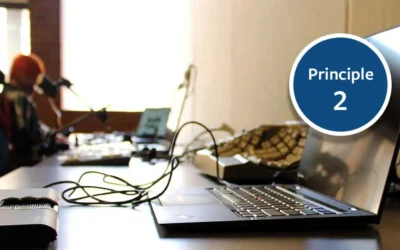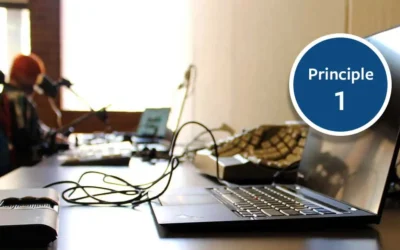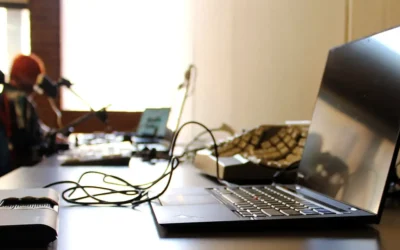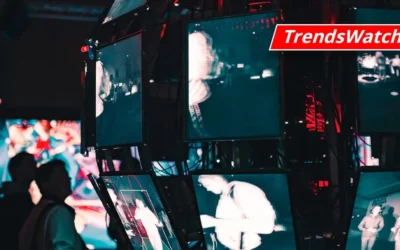Part 1: Create a Museum Digital Project Workflow that Works

Rachael Cristine Woody
Museum digital projects encompass museum object digitization and cataloging. In the case of both digitization and cataloging, an established workflow for staff to follow is critical for success.
A good workflow will also have several benefits:
- It will help set a rhythm for project activities, allowing staff to more easily focus on the quality of the work;
- A well-built and ingrained workflow will make it easier to consistently employ project standards and minimize mistakes; and
- A well created workflow will aid in meeting the project deadline on time.
In order to reap these workflow benefits, it’s important to understand what elements compose a workflow, how to construct an accurate workflow, and how to test and refine it. And that’s what we’ll cover in this digital projects mini-series on workflows.
The Definition of Workflow
First, let’s start by establishing a shared definition of workflow:
A workflow is a sequence of tasks that build and lead to a next task, from initiation all the way to completion. While some workflow tasks may be able to happen asynchronously, there’s typically an order imposed on the tasks so as to yield the best results.
In our exploration of museum digital project workflows, we’re going to review the information needed to construct a workflow that encompasses both digitization and cataloging.
Museum Digital Project Workflow Elements
All museum digital project should include the following elements at a minimum. Depending on the scope and complexity of your digital project, there may be additional activities to consider and add to this workflow formula.
Workflow Elements:
- Define project scope and desired outcomes
- Select and quantify the number of museum objects
- Outline activities to be undertaken
- Establish any standards and specifications
- Identify resources (equipment, software, personnel) needed
Define the Project Scope and Desired Outcomes
If you’re in the driver’s seat for museum digital project creation, then it’s up to you to determine what the desired outcome is and thus, what the scope should entail. While scoping out the project, I recommend considering the following elements:
- Why? What’s the impetus for this project?
- What are the desired outcomes, deliverables, and/or products?
- Are there any dictated outcomes that you must consider (whether by a director, donor, or grant)?
Select and Quantify the Number of Museum Objects
In the majority of cases, the reason “why?” explored in the project scope section will also help you define which museum objects should be included in the project. As you select and add up the relevant objects, you may need to further narrow the criteria in order to create an achievable project scope. Narrowing the criteria can be difficult, especially for those of us who would like to include *all* the objects. Here are a few prompts to consider:
- Which objects are the least “seen” (not online and not often displayed)?
- Which objects help tell a fuller story not otherwise presented?
- Which objects are at risk of loss and need a digital surrogate made before they disintegrate?
Conclusion
Read Create a Museum Digital Project Workflow that Works—Part 2 where we’ll continue to review museum digital project workflow elements: outlining activities, establishing standards and specifications, and identifying resources.
Museum Digital Projects Webinar Series

If you’re interested in catching the previous webinars in the Museum Digital Projects Series, please visit Lucidea’s webinar suite for on-demand viewing:

Rachael Cristine Woody
Expert Rachael Cristine Woody advises on museum strategies, collections management, and grant writing for a wide variety of clients. In addition to several titles published by Lucidea Press, Ms. Woody is a regular contributor to the Think Clearly blog and a popular presenter. Register here for her upcoming webinar, “Create a Museum Digital Project Workflow that Works” on December 15, 2021. And learn about Lucidea’s Argus solution for powerful and innovative museum collections management.
Never miss another post. Subscribe today!
Similar Posts
Museum Collections Online with Accessibility Principle 2: Operable
Compliance with WCAG Version 2.1 Principle 2: Operable
Museum Collections Online with Accessibility Principle 1: Perceivable
Compliance with WCAG Version 2.1 Principle 1: Perceivable, affecting information published from museum CMS to an online portal; expert guidance
Accessibility Standards for Museum Collections Online
A museum’s compliance with the ADA Title II 2024 update has benefits for its online content and for the museum’s community of users.
Museum TrendsWatch 2024: Digital Twins and Doom Loops & Combatting the Loneliness Crisis
Digital Twins is the construction of a digital surrogate for a person, place, or thing—one of several new concepts and trends in the museum sector.




Leave a Comment
Comments are reviewed and must adhere to our comments policy.
0 Comments